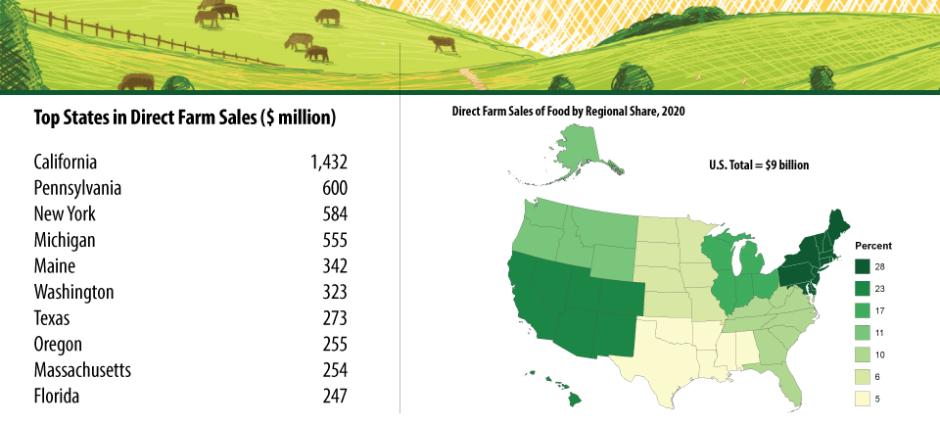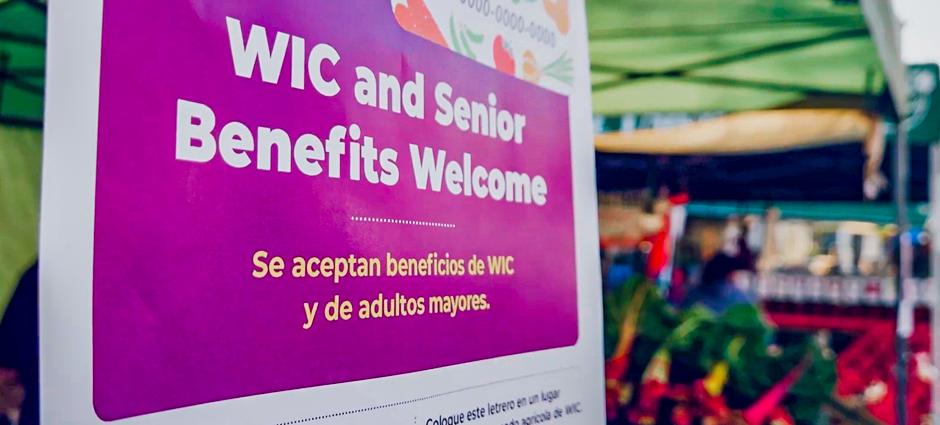Direct Marketing is Big Business for Small California Farms
As someone who was born and raised in Texas but who has lived almost half my life in California, the ongoing rivalry between the two states is a topic of personal fascination. Most recently this was in the headlines with speculation that Twitter might follow Tesla by moving from California to Texas if Elon Musk purchases the company.
On a much smaller scale, but on a much more important topic, the rivalry between the two states was also evident in data recently released by the USDA National Agricultural Statistics Service (NASS) from the Local Food Marketing Practices Survey. This survey counts the number of farms that sell directly to consumers at sites like farm stands and farmers’ markets as well as the number that sell to retailers that then sell directly to consumers.
The survey found that California was by far the dominant state in the local food sector with over $1.4 billion in sales (16% of the national total) and over 14,000 farms (10% of the national total) with direct sales. When looking at just sales directly to consumers – on-farm, through CSAs, or at farmers’ markets, excluding sales to institutions or retailers – California had the highest sales at $284 million. However, Texas had the most farms at nearly 8,000, while California came in fourth on this measure with “only” 5,200 farms, which also put it behind New York and Ohio.
In addition to the state summaries, the survey provided some important information that demonstrates why farmers’ markets and other direct marketing sales channels are essential. The people behind the farms at farmers’ markets, CSAs, and other direct marketing outlets are more likely to be female or under age 35 than farmers in general. Asian and Pacific Islanders, while a small percentage of farmers nationwide, are more prevalent as owners and operators of farms with direct sales. The direct marketing farmers were also more likely to describe farming as their primary occupation. Clearly, direct marketing channels are creating opportunities for farmers that they are not finding in the mainstream food system. This is something that we see every day at our farmers’ markets and the ability to help these farmers pursue their dreams, is an important part of why we work every day to make our farmers’ markets successful.
One more statistic that stood out to me was that nationally, only 7% of farms that sell direct to consumers accepted SNAP payments, but 27% of the farms that sell directly to consumers at farmers’ markets accepted SNAP payments. (SNAP is the food benefit known as CalFresh in California). This reinforces the essential role that farmers’ markets play in making local food, purchased directly from farms, accessible and affordable.
If you share our love of local food and the people who grow it, we hope that you will pay a visit to your local farmers’ market, in whatever state you happen to be in, and show your support for those farms.

Allen Moy
Executive Director


